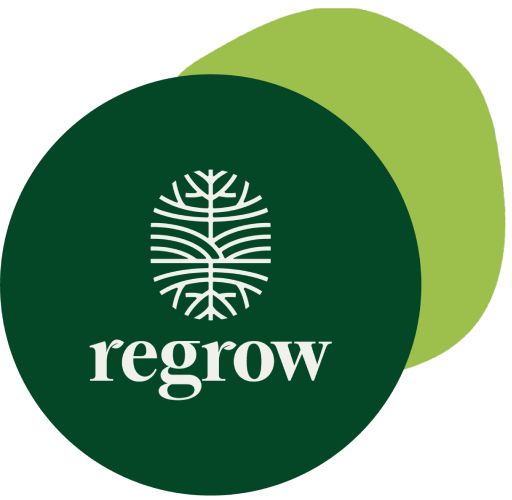According to the United Nations, almost a third of anthropogenic greenhouse gas emissions are generated within forests, land use, and agriculture — also known as the FLAG sector. This has put pressure on companies, especially those with value chains that have extensive FLAG footprints, to prioritize measures to decarbonize their emissions from this sector (which can often account for as high as 90% of an agrifood company’s total emissions).
However, it can be difficult to know where to start this process, which areas of business to focus on, and to what extent change needs to be made. That is why so many companies turn to third party goal-setting and reporting frameworks to help them set realistic yet meaningful goals.
Perhaps the most reputable and established goal-setting framework is the Science Based Targets initiative (SBTi). SBTi is a governance body that ensures corporate emissions reductions goals are aligned with the steps that the company setting the target must take — and the pace with which they must take them — in order to reduce emissions to be in line with the Paris Agreement (which commits signatories to take actions to limit global warming to below 2 degrees celsius). Since 2017, the number of Fortune 500 companies that have formally set Science Based Targets has grown over sixfold, and SBTi is increasingly being viewed as the standard that proactive companies are using.
Setting Science-Based Targets (SBTs) has, however, been particularly challenging for companies that have extensive emissions from the FLAG sector, as it can be difficult to identify, and subsequently acquire the precise data needed to make accurate measurements of these emissions in the first place.
For this reason, SBTi recently released new, more specific guidance for goal setting that will go into effect in April 2023, pertaining to companies whose primary commercial activities lie within the FLAG sector, and to those with FLAG sector emissions that total 20% or more of their overall emissions. Per the new guidance, these companies will, for the first time, be required to set an additional FLAG target as part of their larger target.
There are multiple reasons why SBTi is releasing these additional reporting requirements now. In addition to the fact that agrifood systems already make up about a third of global anthropogenic emissions, agricultural productivity will have to increase by roughly 50% before 2050 to feed a growing population. This means that agricultural land will simultaneously need to be more productive and managed in a way that has a far lower emissions intensity going forward. These new FLAG requirements are mechanisms to ensure that companies are managing and disclosing their agricultural supply chain actions accordingly.
What is the new guidance?
Although these new requirements will help companies set more robust and credible goals, the data they need to set these goals can be difficult to find. There are three technical areas that must now be accounted for in FLAG SBTs:
- Emissions associated with land management
- Emissions reductions linked to carbon removals and/or storage
- Emissions pertaining to land use change.
Listed below are the specific pieces of data that will be necessary in order to estimate each category of emissions.
Emissions from land management:
- Methane:
- From manure management
- From enteric fermentation
- From flooded soil
- From agricultural waste burning
- Nitrous Oxide:
- From manure management
- From fertilizer application, leaching, runoff, and volatilization
- From fertilizer production
- Carbon Dioxide
- From machinery used on farm
- From transport of biomass
Emissions reductions from carbon removals and/or storage
- Enhancing organic carbon accrual in soil
- Improved forestry management practices
Emissions Land use Change (LUC)
- Deforestation
- Conversion of natural habitats (such as native grasslands, forests, and coastal wetlands) into cropland
How to gather the right data?
Regrow specializes in gathering this FLAG data, which, when done credibly, requires a team of scientists, software engineers and data analysts. More importantly, our science and technology can facilitate data collection at scale.
Sustainability Insights, a novel platform launched last year, enables users to collect Scope 3 emissions and land management data – including carbon, methane, nitrous oxide, removals and storage – within their specific, customized supply sheds. The data collected is aligned with SBTi guidance, scientifically-backed, and calculated with models and technologies specifically built for the agricultural sector.
Sustainability Insights uses OpTIS — our exclusive remote sensing algorithm – and DNDC, our dynamic, peer-reviewed soil carbon model. This methodology for data collection and emission estimation is supported by leading regulation bodies within agriculture; it is verified with the Climate Action Reserve and aligned with programs approved by SustainCERT.
A crucial time for FLAG guidance
SBTi’s push for higher levels of granularity in supply-chain goal-setting comes at a crucial time.
If we are to collectively meet the emissions targets of the Paris Agreement, we need to address emissions associated with forestry, agriculture and other land use.
This guidance allows us to do this on a large scale. Regrow is excited to work with companies to gather the data that is necessary to set and meet emissions targets for agriculture.
Learn more about Sustainability Insights, and see how Regrow is working with partners to accelerate change in agriculture.
.webp)


